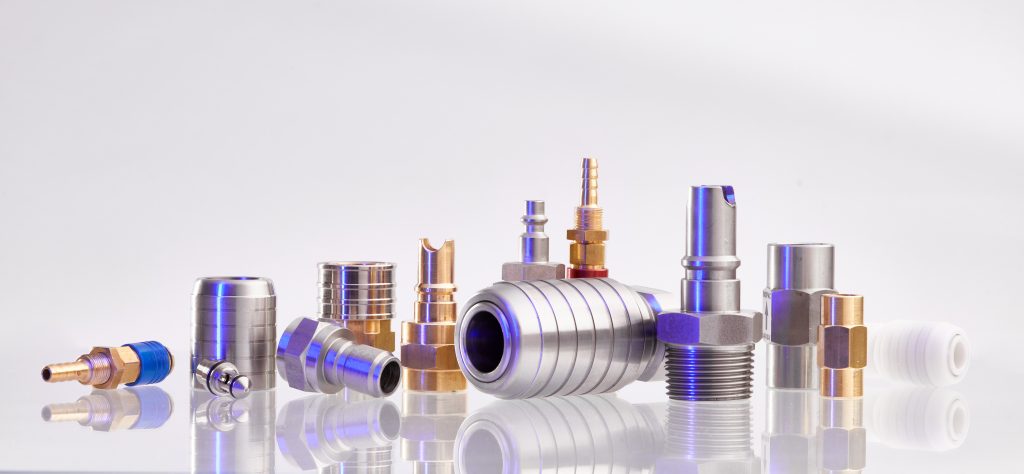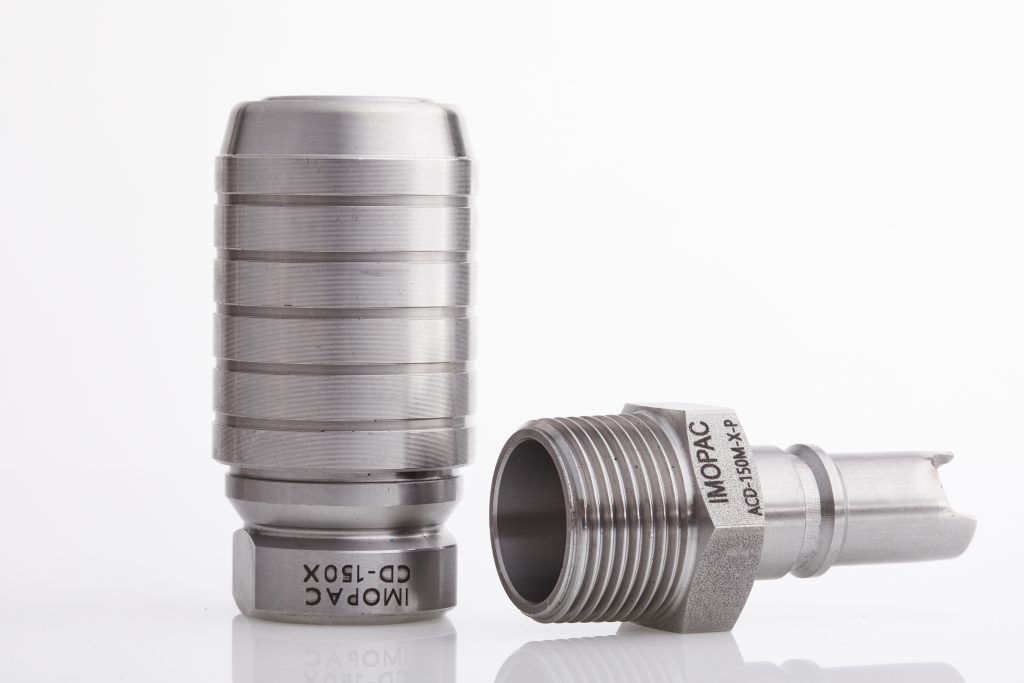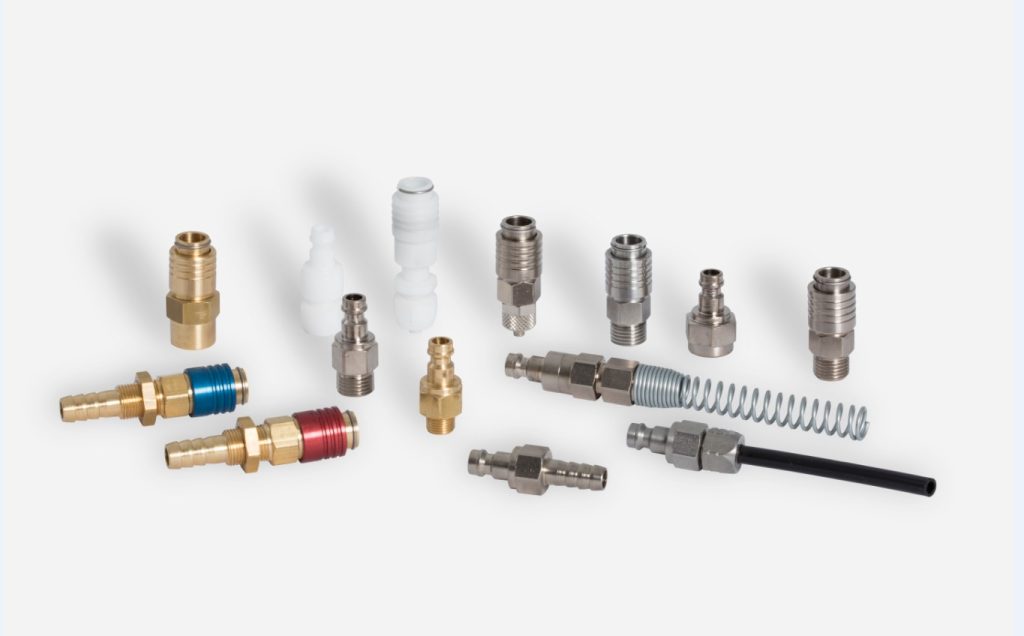Quick couplings, quick connectors, rapid fittings… They go by many names depending on the region. In this article, we’ll explore what a quick connect coupling is and the role it plays in industrial installations.

What is a quick connect coupling?
The best definition comes from ISO 6150, which describes a quick connect coupling as a device used to connect and disconnect fluid lines quickly, without the use of tools or special equipment.
In other words, it’s a component that allows you to isolate parts of a circuit using only your hands.
The main function of quick couplings is not only to connect and disconnect circuit segments, but also to maintain system sealing, preventing fluid leaks and pressure drops.
All quick connect couplings share a set of internal components, regardless of brand or system. These include elements that ensure sealing, components that retain the plug within the socket, and mechanisms that actuate the connection.
These internal parts ensure a hermetic seal within milliseconds. Simply push the plug into the socket and the system is sealed and ready to operate. When disconnected, the system closes automatically, preventing leaks and pressure loss.
How is it different from a fitting?
Since the creation of automatic fittings, this is a common question: If I can connect a system with one hand, when should I use a quick coupling instead?
Both components serve to connect parts of a circuit, yes, but their functions differ:
- A fitting is installed to join tubes or adapt flow paths and usually remains fixed. Once installed, it’s not removed unless for maintenance or repair.
- A quick connect coupling, on the other hand, is designed to be connected and disconnected frequently. It’s intended to facilitate dynamic operations.
We could say the fitting is part of the structure, while the quick coupling is the gateway to the system.
For example, a fitting connects tubing sections, while a quick coupling connects elements that need to be pressurized, like a blow gun.

Why are they so common in industry?
Because they solve several problems at once:
- Versatile: allow connection of different elements and tools
- Reduce maintenance times
- Prevent pressure loss during disconnection
- Enable fast module or section replacement
- Tool-free operation simplifies use
- With anti-hose whip systems, they minimize operator risk
What should I consider when choosing a quick coupling?
Each system is unique. Every industry, production plant, and circuit has its own specifications. Choosing the right coupling depends on understanding your exact needs:
- Do you need the fluid to remain sealed inside when disconnected? (You can review our sealing types guide here)
- Is it for compressed air? A corrosive environment? Special industrial fluids?
→ This will determine which materials should be used. - What pressure will the system operate at? How much flow must pass through?
→ This determines the profile to choose.
All this information —and more— will help you select the right connection. And if you’re unsure, a technical specialist can guide you.

How to choose the right quick coupling
Even after learning what a quick connect coupling is, it’s normal not to know which one will work best in your setup. There are many variables.
When in doubt, contact industry experts.
At IMOPAC, we’ve known the world of pneumatics and industry for nearly 70 years. We’re a team of professionals specialized in this field. We help you choose the right coupling, and if it doesn’t exist yet — we’ll develop it with you, because we’re manufacturers.
It’s not about picking something that “fits.”
It’s about choosing something that won’t fail when it matters most.
Feel free to contact us — we’ll listen to your needs and help you with your project. You can also reach us here by email.
And if you want to keep learning about our world, follow us on LinkedIn for updates, insights, and tips on quick couplings, pneumatics, and industry.